Founded in 2019, HestiaCP, an open-source web hosting control panel, simplifies server management and website hosting with over 100,000 installations
globally. Its user-friendly interface supports one-click installations, automated backups, and SSL certificate management, catering to a diverse
user base. With compatibility across multiple Linux distributions, HestiaCP is utilized by individuals and small to medium-sized businesses for over
500,000 websites, offering an efficient control panel for diverse web hosting environments.
- Step 1: Generating a CSR and Private Key
- Step 2: Order and Configure the SSL Certificate
- Step 3: Upload the SSL Certificate Files to your Server
- Step 4: Test the SSL Certificate
Step 1. Generating a CSR and Private Key
What is a CSR?
A Certificate Signing Request (CSR) is a vital element in obtaining digital certificates for securing online communications. Used in public key infrastructure (PKI), a CSR is a
formal request submitted to a certificate authority (CA), containing essential details and a public key. Its function is to validate the requesting party's legitimacy,
facilitating the issuance of a digital certificate. Generated by the entity seeking the certificate, the CSR ensures secure communication by enabling encryption with the
corresponding private key. Widely applied in securing websites, email, and network connections, the CSR plays a pivotal role in upholding the integrity and confidentiality
of digital interactions on the internet.
Navigate to SSLTrust's CSR Generator and generate your CSR and Private Key.
Note:- Save the generated Private Key and CSR on your device. This might come in handy if you want to re-do the configuration.
Step 2. Order and Configure the SSL Certificate
The following step in the installation process is to order and configure SSL Certificate. We recommend SSLTrust because of our exceptional Customer Service, Money Back guarantee and SSL Installation Service. Here is a bit of information about SSL Certificates to help choose the best for you and your website.
Level One: Domain Validated (DV) SSL certificates
Validation Process: This is the basic level of SSL/TLS certificate validation. The certificate authority (CA) verifies that the applicant has control over the domain for which
the certificate is requested. The domain can be verified with either the email, HTTP record or a CNAME record
Use Case: Suitable for personal websites, blogs, or small business sites where encryption is important, but extensive user trust verification is not a top priority.
Here's a lit of cheap, easy and fast to implement Domain Validated (DV) SSL Certificates.
Level Two: Organization Validated (OV) SSL Certificates
Validation Process: In addition to domain validation, the CA also validates the organization's information. This involves confirming the legal existence of the entity and
its connection to the domain.
Use Case: Commonly used by businesses and organizations that want to demonstrate a higher level of trust to their website visitors. OV certificates provide a higher level of
assurance compared to DV certificates.
Here's a list of Organization Validated (OV) SSL Certificates from top brands.
Level Three: Extended Validation (EV) SSL Certificates
Validation Process: The most rigorous level of validation. It includes both domain and organization validation, with additional scrutiny and requirements. The CA verifies the
legal, physical, and operational existence of the entity requesting the certificate.
Use Case: Typically used by e-commerce websites, financial institutions, and other organizations where establishing the highest level of trust and security is crucial.
EV certificates trigger the display of the organization's name in the address bar of modern browsers, providing a visual cue to users about the site's legitimacy.
Here's a list of Extended Validation (EV) SSL Certificates from top brands.
If you're still unsure of what certificate to choose for your business, please contact our Sales Team and they will be glad to help you out.
1: Once you've added the SSL Certificate into your cart, you can now click on Checkout to complete the process.

Fill in your account details
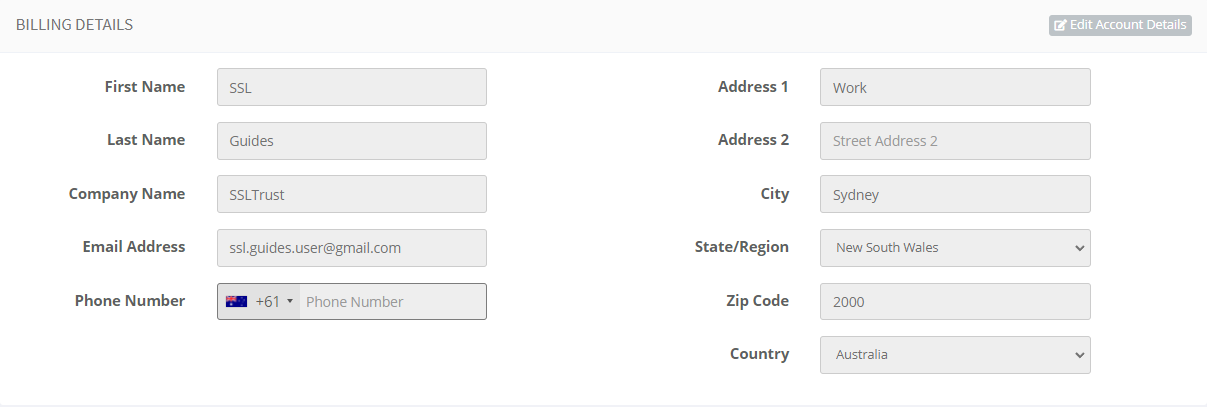
Choose your preferred mode of payment and click on checkout.
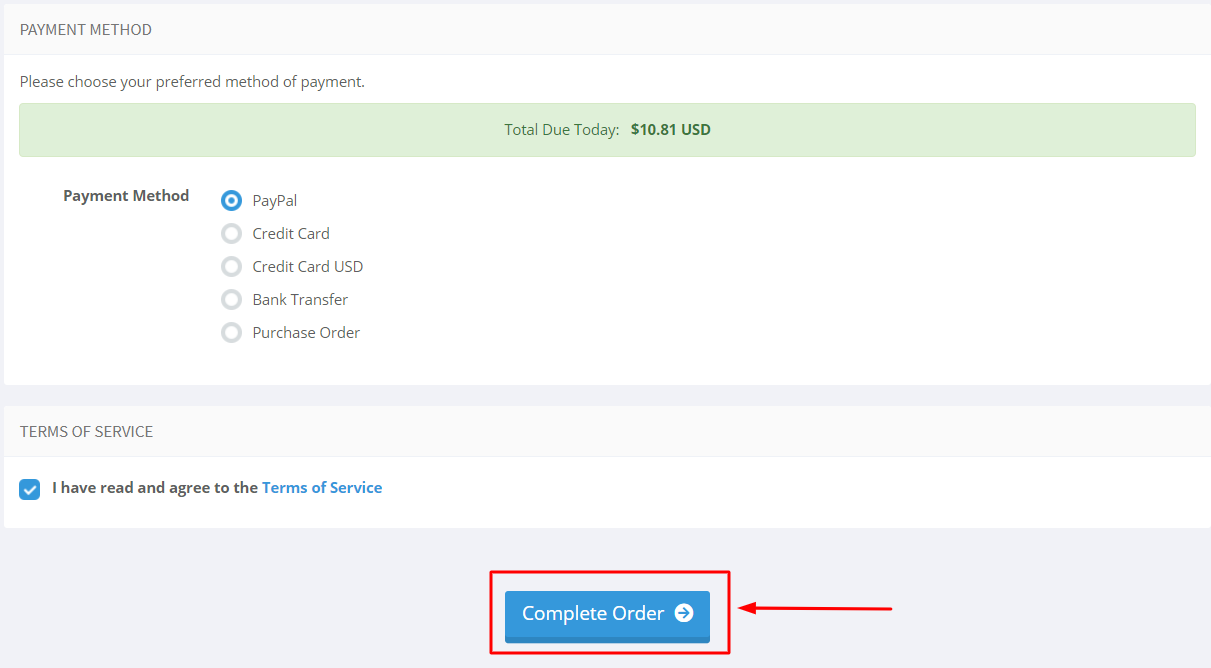
2: After you have purchased the SSL Certificate, you can start the configuration process.
This can be started by going into your SSLTrust account and managing your recent purchase.
Head over to the SSLTrust Dashboard and under Services, select My Services.
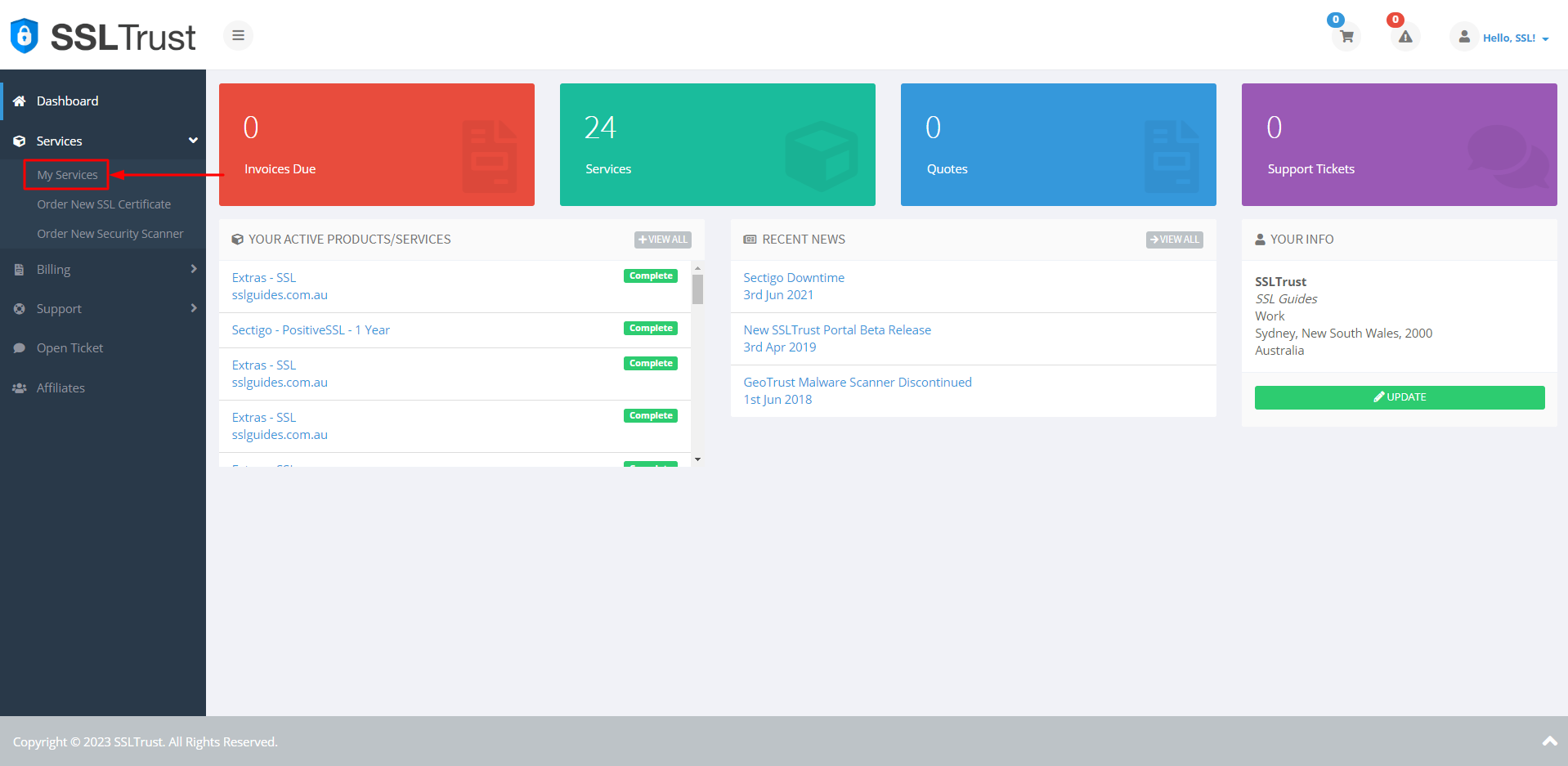
You should be able to see your purchased certificate and order status, now click on Manage
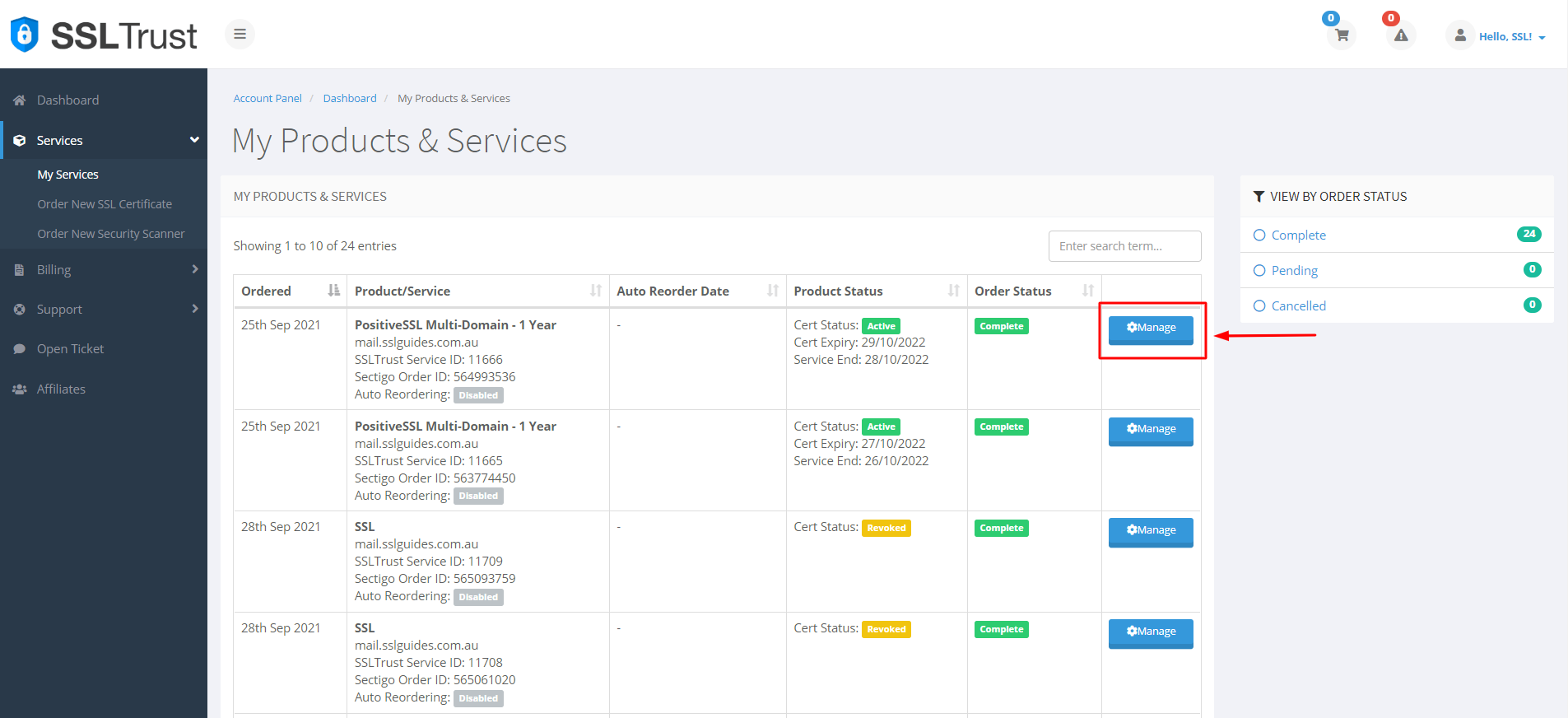
This will take you to the Product Details of your SSL Certificate. Click on start configuration to do the configuration yourself or you can provide the URL below to the appropriate person to complete the configuration for you.

3: Copy and paste the previously generated CSR (Certificate Signing Request) which should include:-
-----BEGIN CERTIFICATE REQUEST----- -----END CERTIFICATE REQUEST-----
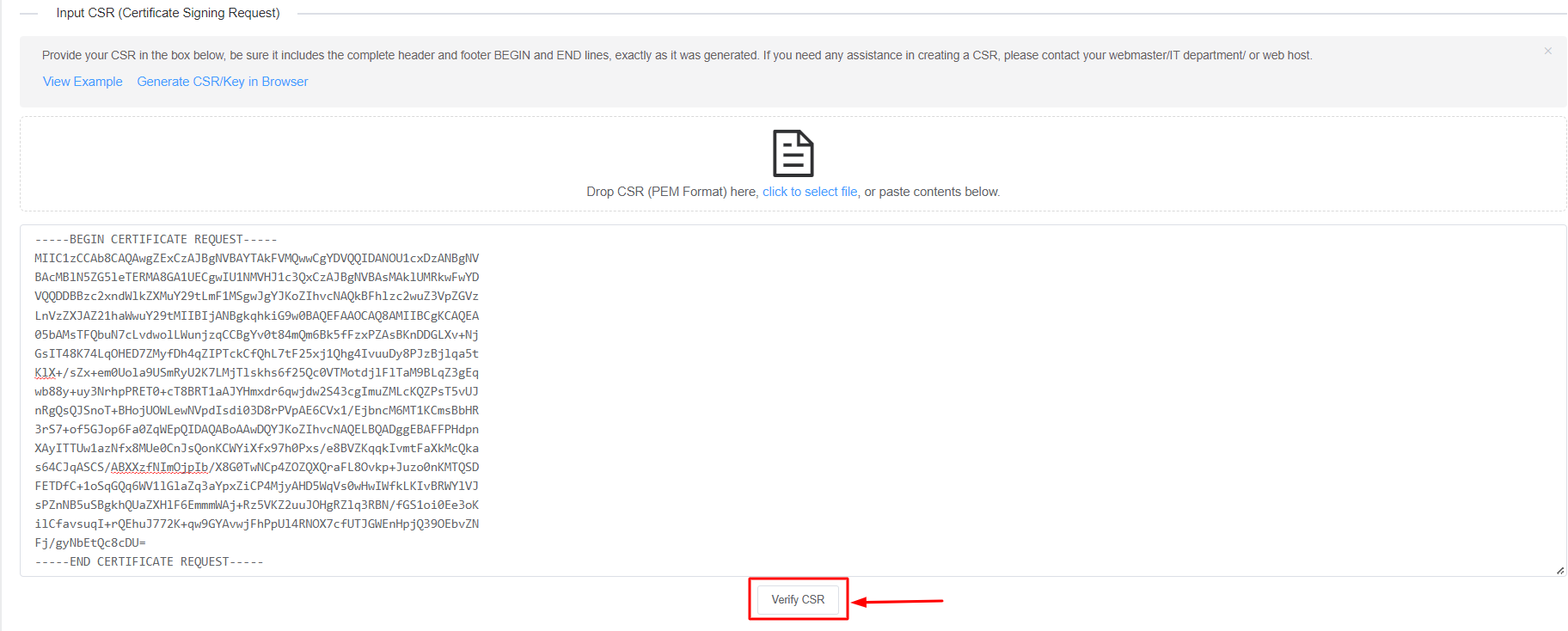
Then, click on Verify CSR.
If the CSR details match the inputs you've entered before, you can now proceed or else generate a new CSR with proper details.

Select the Server Type and click on Next Step>

4: Fill in your contact information

If you have a technical contact managing the certificate for you, please enter their details.
They will also have permission to manage the Certificate and will be sent renewal reminders.
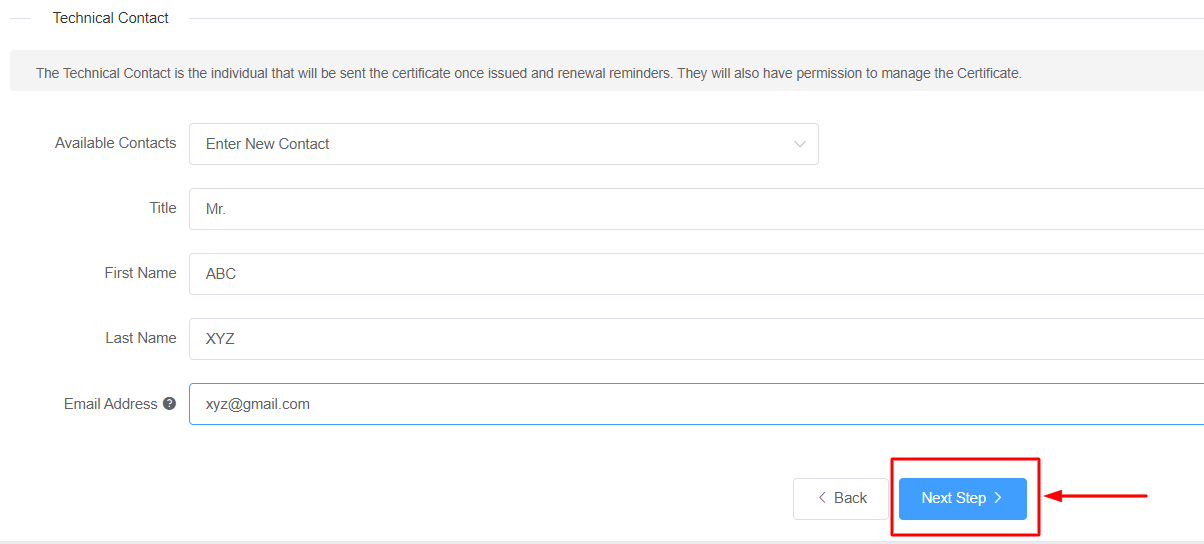
To obtain a business SSL certificate, you will need to provide your business details, including your correct address, phone number, and legal entity name. The Certificate Authority will verify the accuracy of this information. If there are any mistakes, it may cause delays in the process.
Then, click on Next Step
5: The next step in this process is Domain Control Validation (DCV).
DCV, or Domain Control Validation, is a crucial step in SSL certificate issuance. It verifies that the entity requesting the certificate has control over the specific domain by utilizing methods like email verification, file uploads, or DNS changes. This process ensures the legitimacy of SSL certificates and enhances online security.
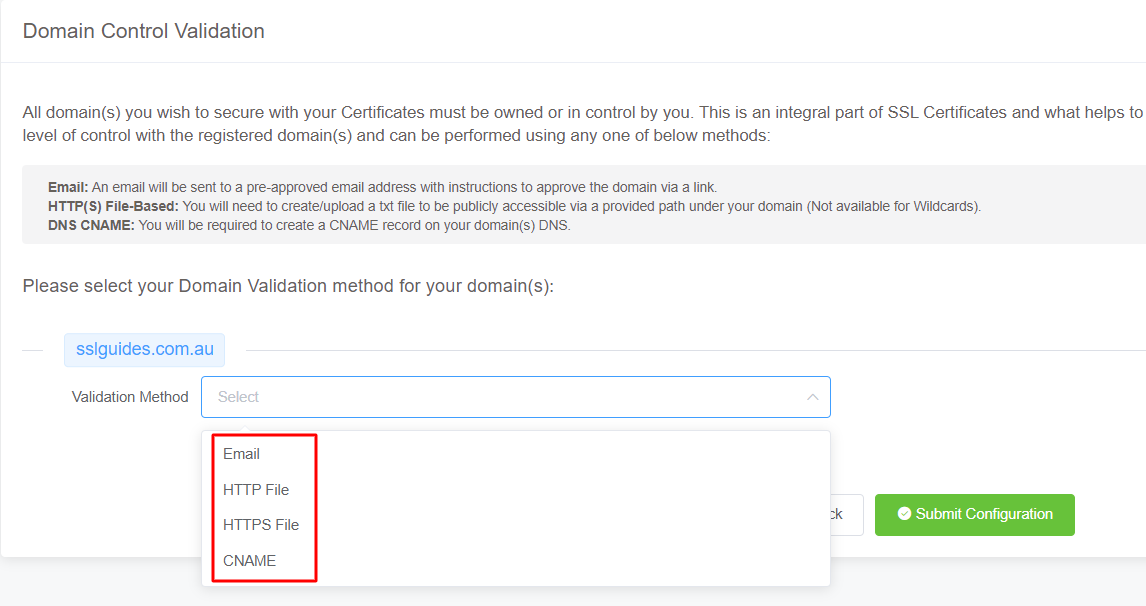
Select the method that is easiest for you. Having an email address with the domain name will be the quickest.
You will be sent an email containing a link which when clicked upon should validate your domain name.
In HTTP/HTTPS File Validation Method, you can create a folder in the specified and directory, paste in the contents and your domain should be validated.
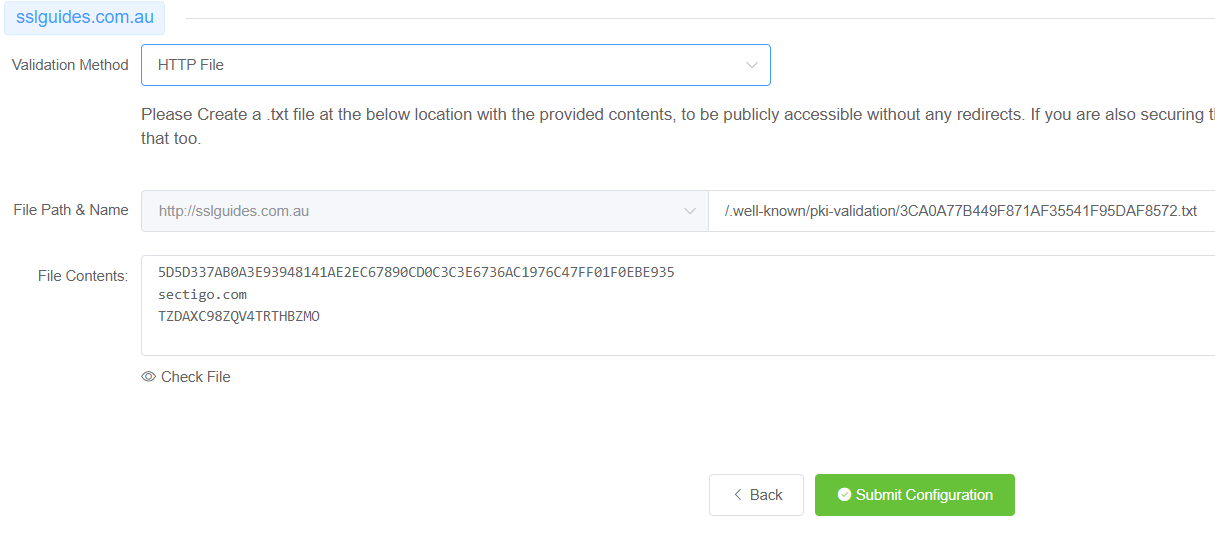
The final method to validate your domain name would be CNAME Validation. Basically you have to create a CNAME record in your DNS Settings to validate your domain name and then click on the Check DNS Record button to verify DNS changes.
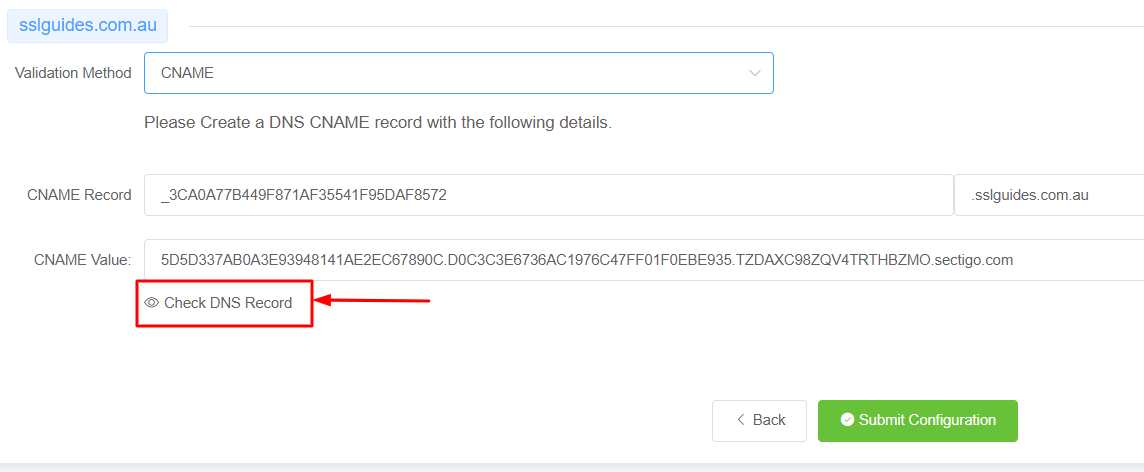
After a few seconds or minutes depending on your DNS propagation speed, the CNAME record should be verified.
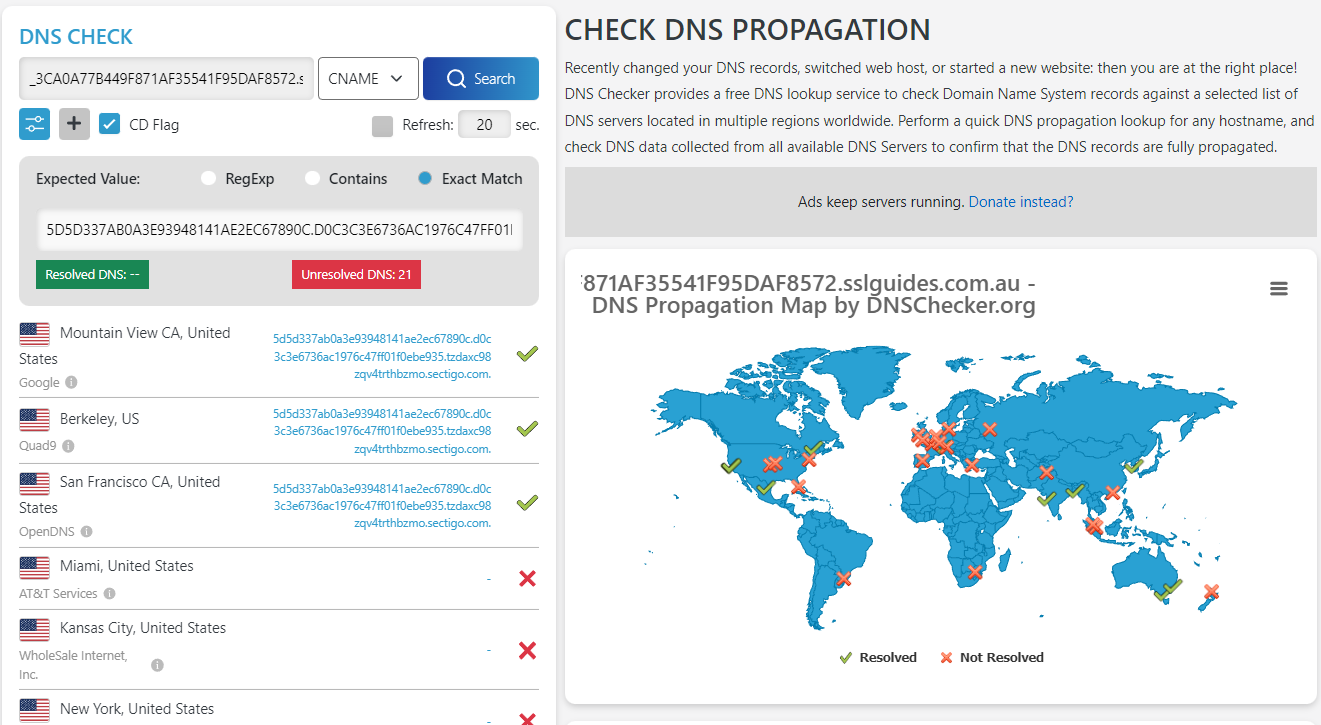
The configuration should be a success. Click on the button below to access the validation manager.
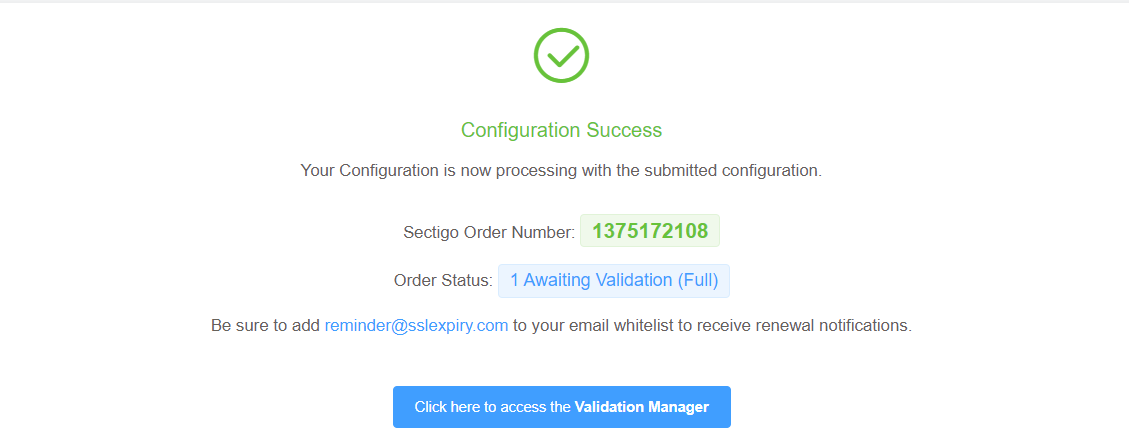
6: Your certificate should have now been issued if you completed all the above steps correctly.
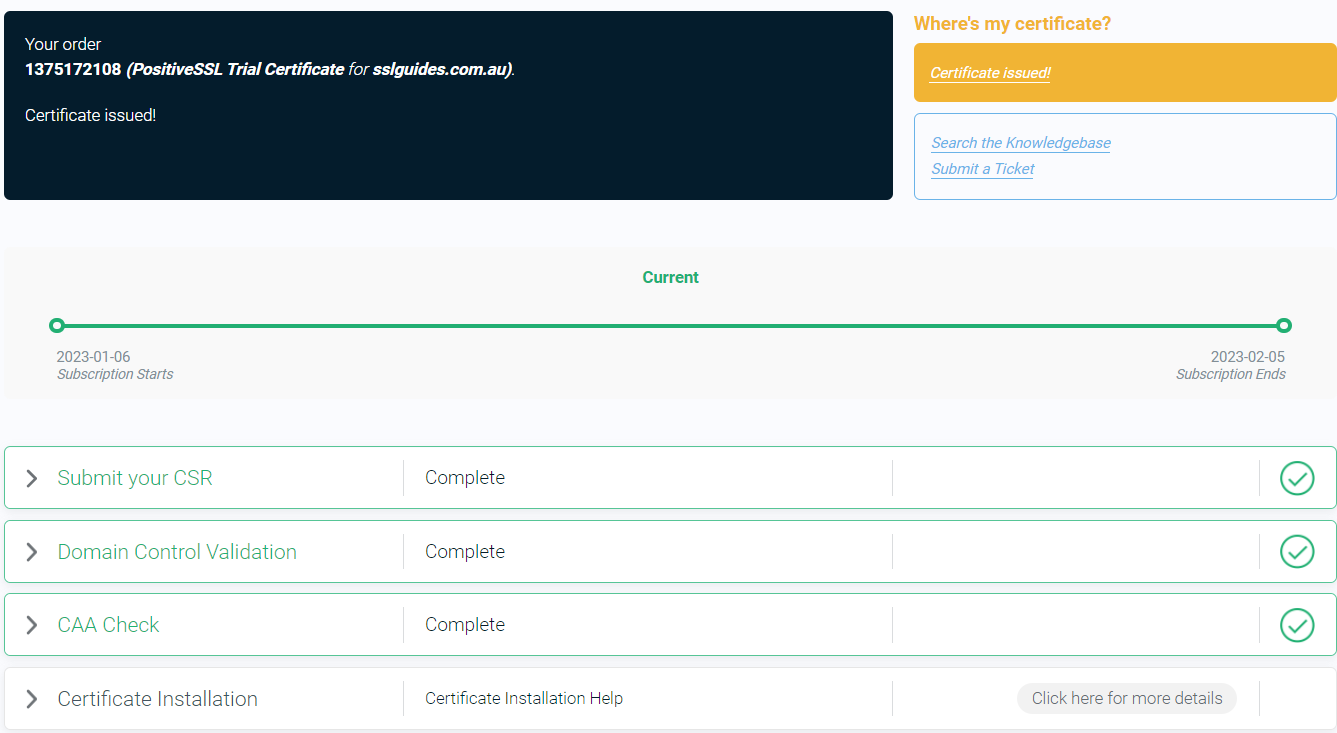
If not, click on Domain Control Validation, and re-submit whatever method you chose for validation.
Upon completing domain validation using the chosen method, your SSL certificate will be issued. If you have ordered a Business SSL, you will need to wait for the Certificate Authority to verify your business address and phone number. If the validation process has not been completed or you have not received your certificate after a certain period of time, please reach out to the support team to check on the status of your certificate.
Step 3. Upload the SSL Certificate Files to your Server
Once your SSL certificate has been issued, you will receive an email with the certificate directly from the Certificate Authority. Alternatively, you can download the certificate from the SSLTrust Portal, which presents the certificate in a convenient, easy-to-use format.
Again, head over to the SSLTrust Dashboard and click on your certificate:-
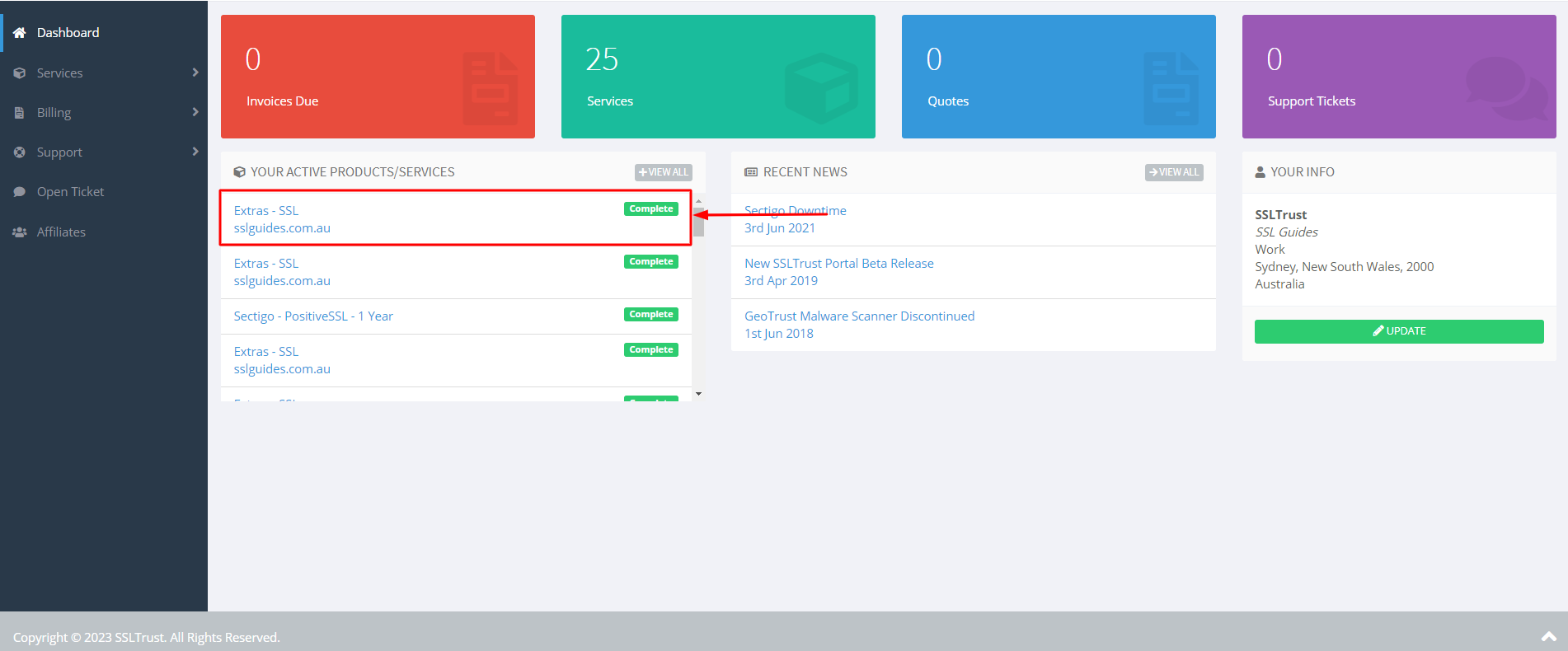
1: Click on Collect/Download Certificate-
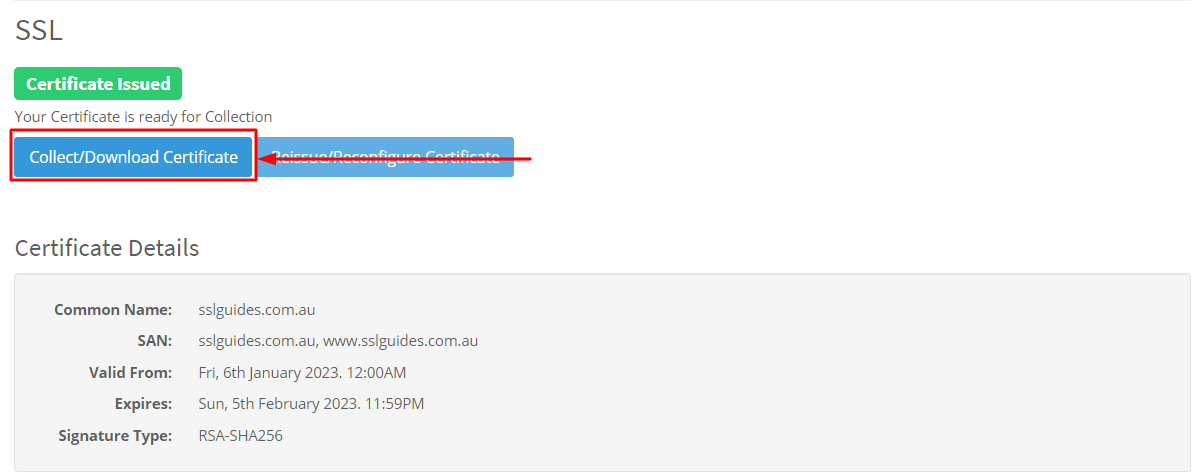
Go to the first column and click on copy to clipboard
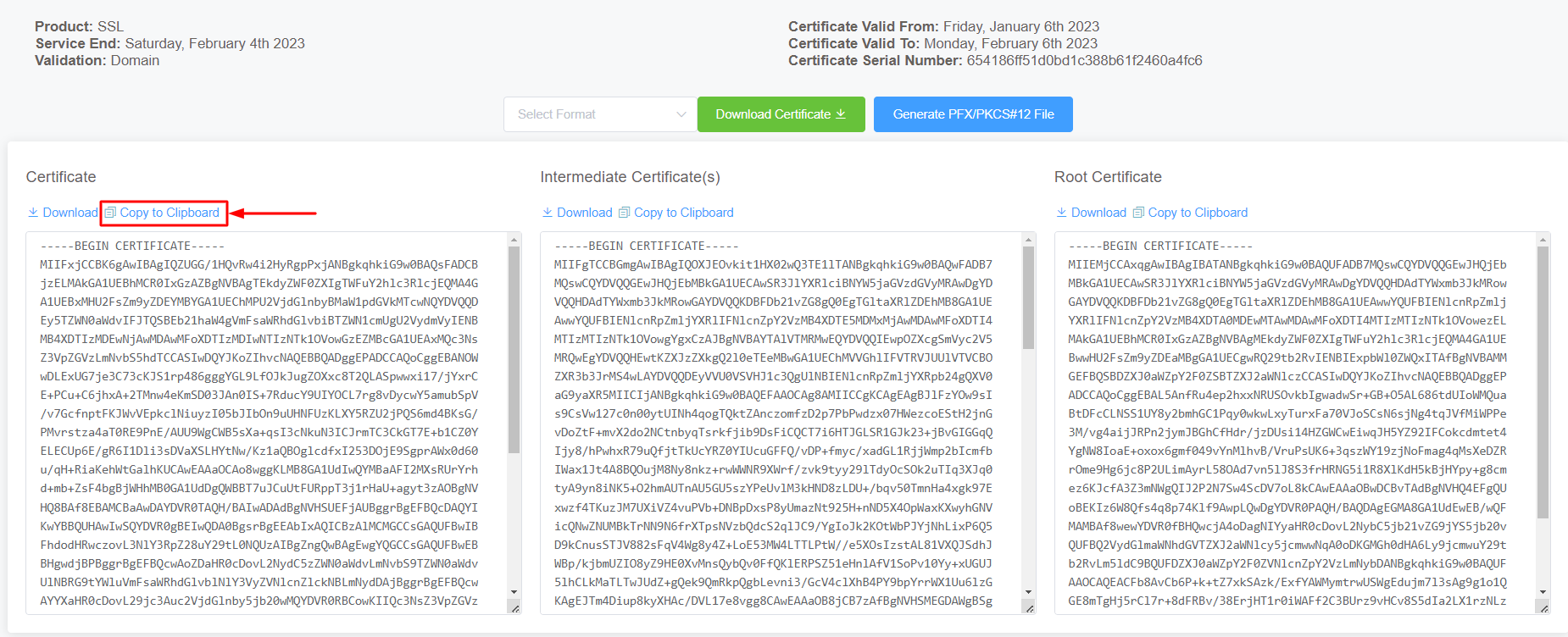
2: Login to your account on HestiaCP and you will see the dashboard. Click on Web

3: Select/Create your website
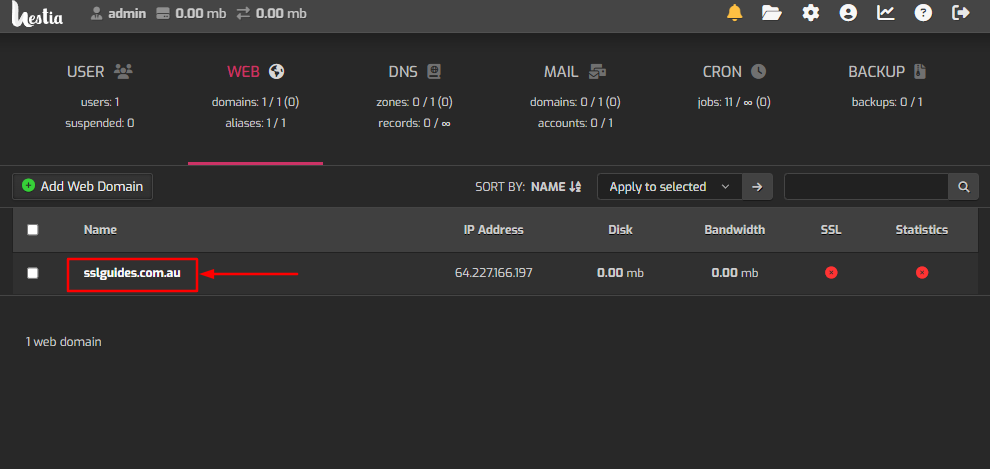
4: Select the "Enable SSL" checkbox
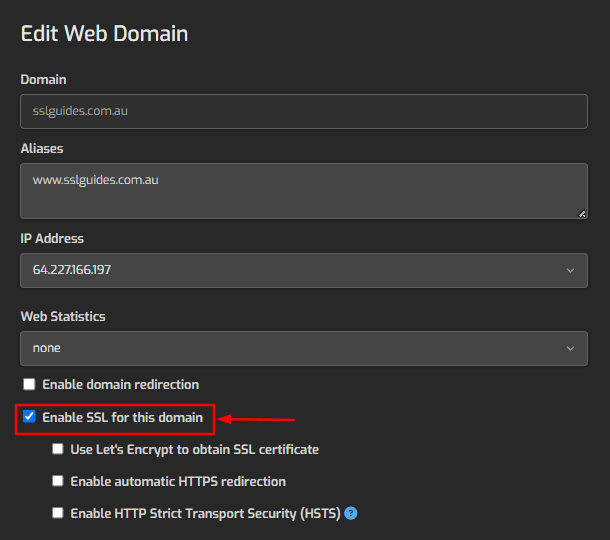
5: Paste in your copied primary certificate in the SSL Certificate dialog box and then proceed to copy and paste your private key in the following dialog box.

6: Furthermore, head back to the certificate collection page and click on copy to clipboard on the Intermediate certificate.

Proceed to paste your Intermediate Certificate in the last dialog box.
7: Finally, click on Save on the top right.
Now, navigate to https:// yourdomain.com to view your secure website.
Step 4. Test the SSL Certificate
SSL Labs, now called Qualys SSL Labs, is a web service providing tools to analyze and test the SSL/TLS configurations of web servers. Its SSL Server Test assesses various security aspects, assigning a grade based on the server's overall security posture. This tool is widely used by administrators and security professionals to ensure secure server configurations and identify vulnerabilities.
We recommend you use this tool to check the install has been completed successfully: www.ssllabs.com/ssltest/
For custom port/Localhost SSL Testing, check out another tool here
 You may need to get your web developer, or update your website yourself, to make sure all files use https:// and all links to your site and within your website use https://
You may need to get your web developer, or update your website yourself, to make sure all files use https:// and all links to your site and within your website use https://
If you require any assistance with your SSL Installation please contact our friendly support team.
